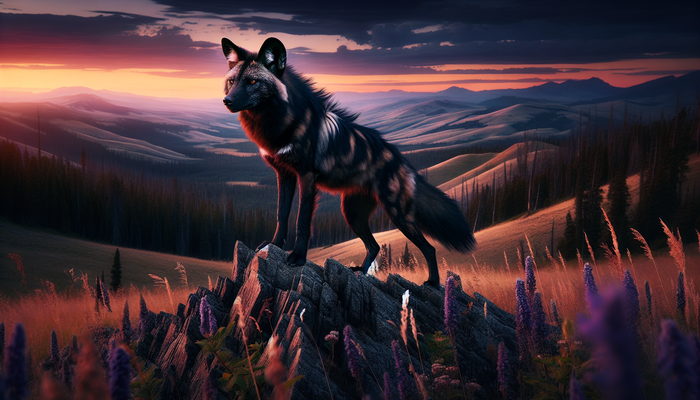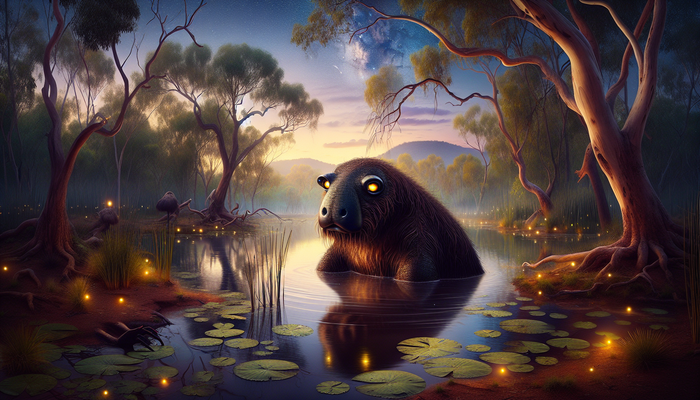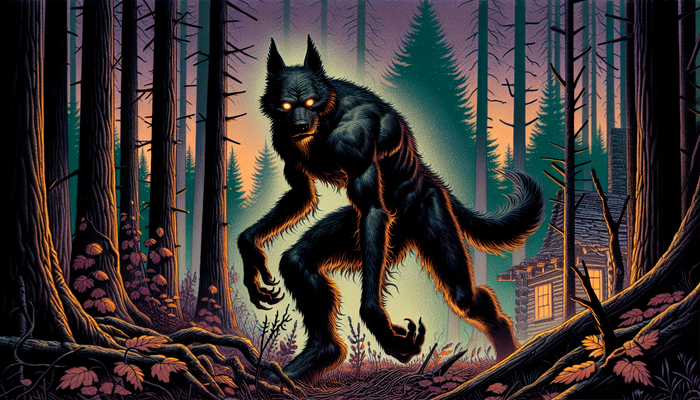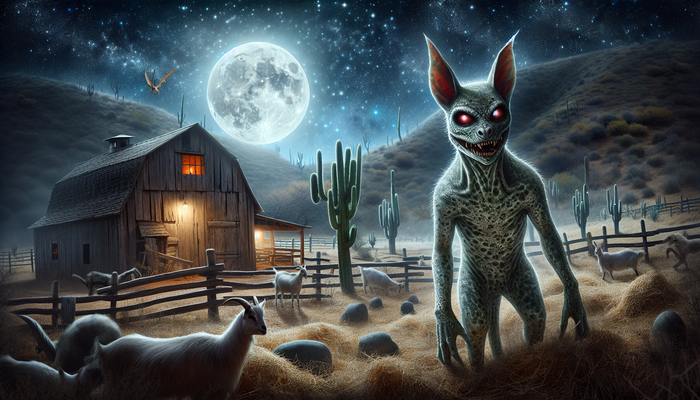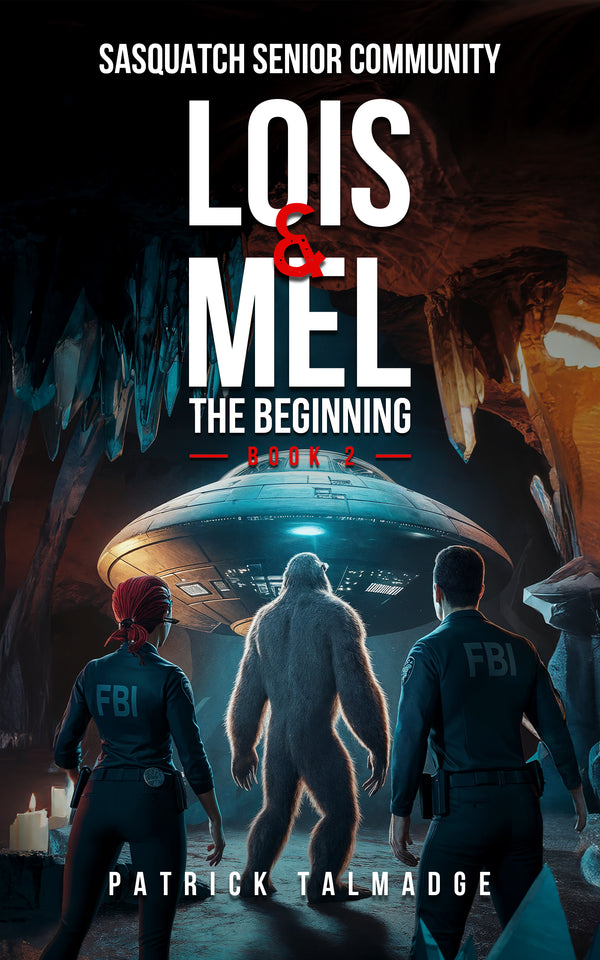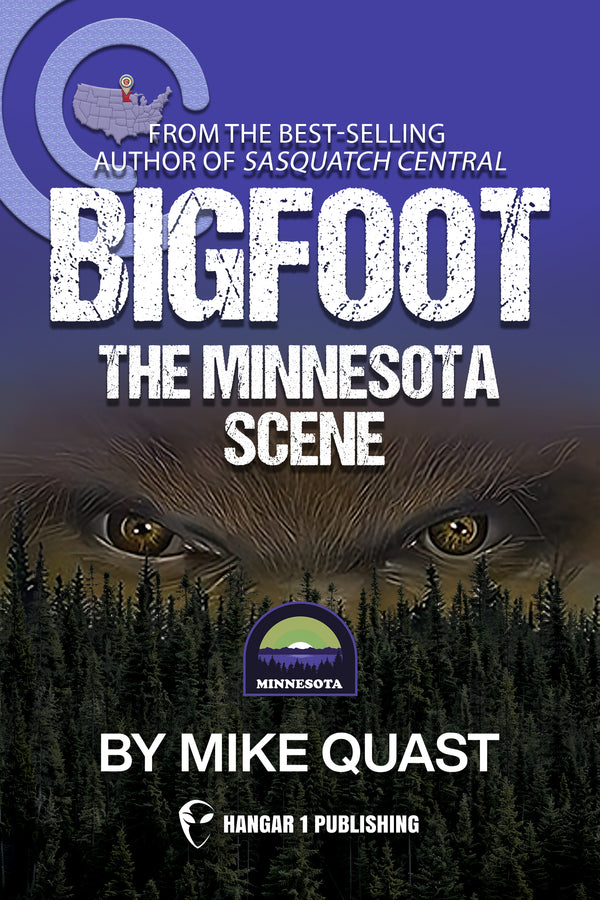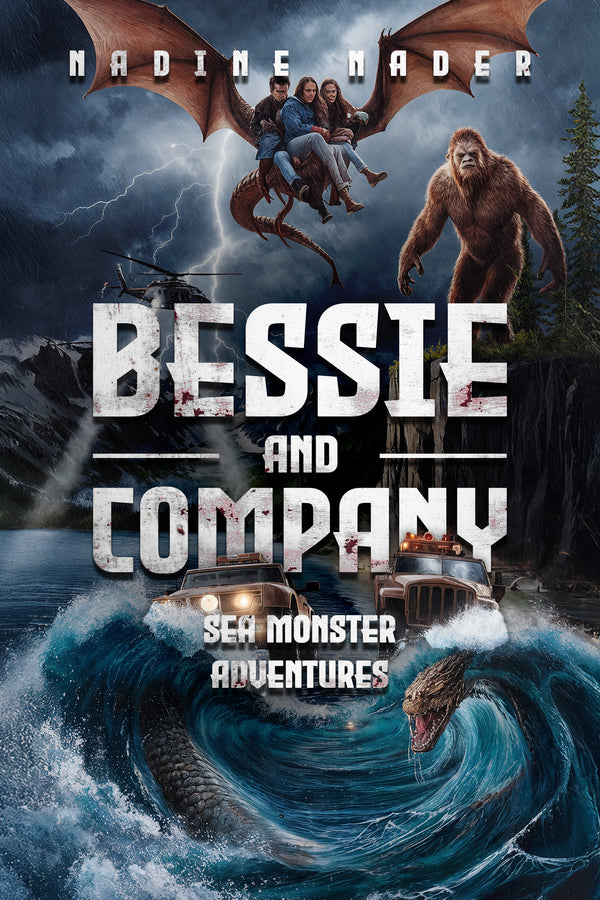The Grunch Monster: Louisiana's Blood-Sucking Bayou Beast
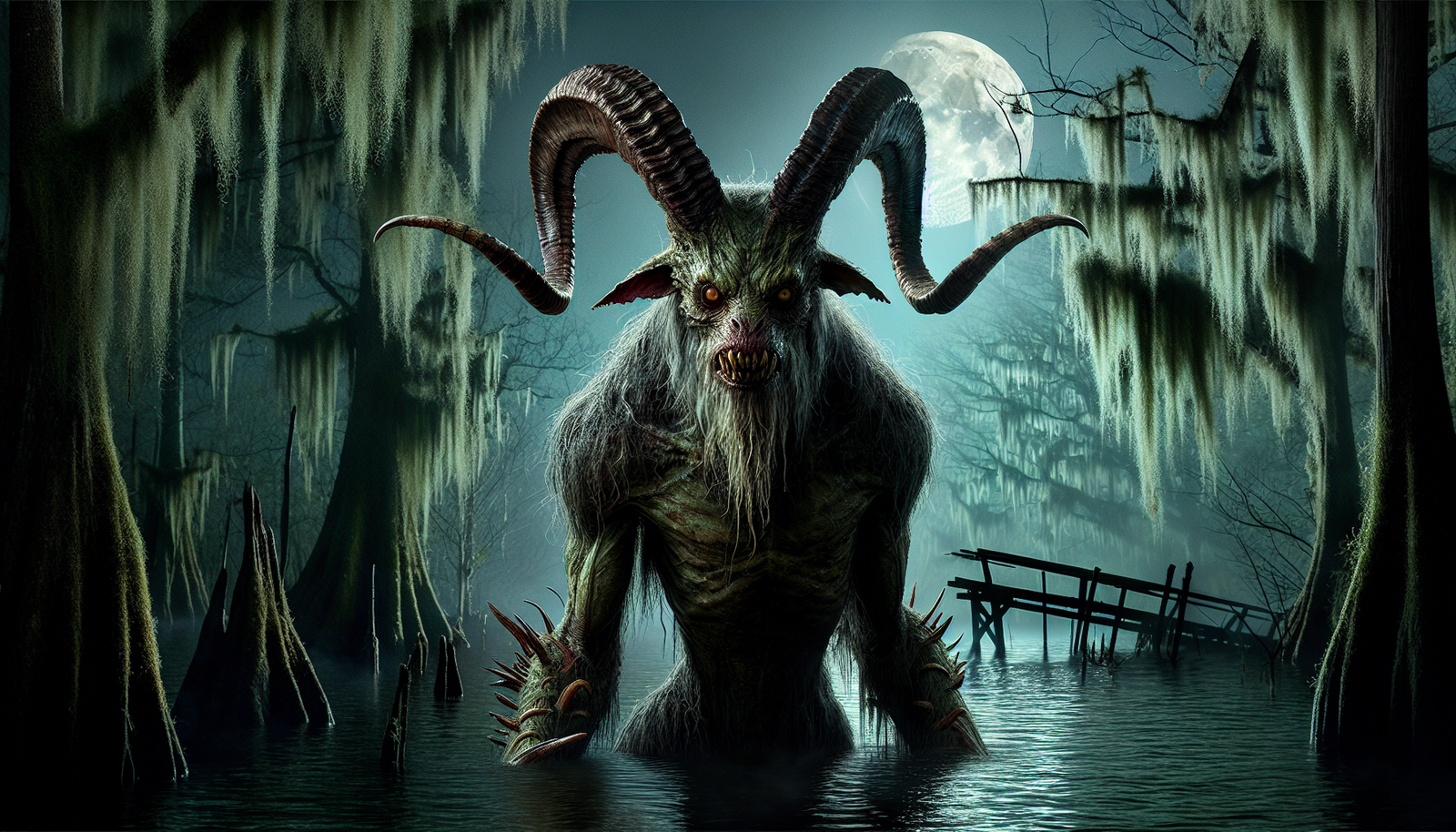
By Dr. Elizabeth Harper, Cryptozoologist
Deep in the heart of Louisiana's bayou country, a terrifying legend has stalked the swamps and backroads for centuries. The Grunch Monster, a cryptid said to combine the most fearsome qualities of man and beast, has long been a subject of fascination and terror for those who call the region home. With a history stretching back to the earliest days of New Orleans, this blood-sucking creature has left an indelible mark on the folklore of the Big Easy and beyond.
The tale of the Grunch is one that has captivated me for years, both as a biologist and as a lifelong student of the strange and unexplained. In my decades of research into the world of cryptozoology, few creatures have proven as enduringly enigmatic or as deeply rooted in the cultural fabric of their native region as this scaly, goat-horned abomination.
The History of New Orleans and the Birth of the Grunch Legend
To truly understand the Grunch, one must first delve into the rich and often tumultuous history of New Orleans itself. Founded by the French in 1718, this strategically vital port city at the mouth of the Mississippi River has long been a melting pot of cultures and traditions. As control of the colony shifted from France to Spain and finally to the United States in the early 19th century, African slaves and their descendants, both free and enslaved, mixed with European immigrants and Native Americans to create the vibrant Creole culture that would come to define the city.
It was against this backdrop of cultural fusion and upheaval that the legend of the Grunch first took root. The earliest recorded sightings of the creature date back to the 1820s and 1830s, a time when New Orleans was still a relatively small and isolated frontier outpost surrounded by vast tracts of untamed swampland. For the city's early inhabitants, these dense, primordial wetlands were places of mystery and danger, where ancient Native American spirits and the ghosts of tortured slaves were said to roam alongside very real threats like alligators, panthers, and poisonous snakes.
Grunch Road: The Lair of the Beast
According to local lore, the Grunch made its home in the heart of this wilderness, along a remote stretch of shell road that came to be known as Grunch Road. Though the exact location of this ominous thoroughfare has been lost to time, most accounts place it somewhere in the eastern part of New Orleans, in an area now known as the Little Woods.
It was here, along the overgrown, serpentine curves of Grunch Road, that the creature was said to lie in wait for hapless travelers foolish enough to venture into its domain. Many early descriptions of the Grunch paint it as a grotesque hybrid of man and beast, with the scaly, leathery body of a reptile, the horned head of a goat, and the glowing red eyes of a demon. Some even claimed that the creature possessed the power to shape-shift or turn invisible, allowing it to stalk its prey unseen.
The Cunning and Bloodthirst of the Grunch
But the Grunch was far from just another mindless predator. Those who encountered the beast and lived to tell the tale spoke of an uncanny intelligence lurking behind those fiery eyes - a malevolent, almost human cunning that set it apart from any normal animal. The Grunch was said to be able to open doors, use tools, and even mimic human speech in order to lure its victims to their doom.
And once the Grunch had its prey in its sights, the true horror would begin. Like the chupacabra of Latin American legend, the Grunch was known to drain the blood of its victims through a single, almost surgical puncture wound. Livestock and pets were frequent targets, their carcasses found scattered along the bayou, drained of every last drop of blood. But the creature's appetites were not limited to animals alone. Many tales speak of lone travelers or amorous couples who ventured down Grunch Road, never to be seen again. And even those lucky few who survived an encounter with the beast were said to be forever "marked," doomed to eventually transform into Grunches themselves.
Theories on the Origins of the Grunch
As word of the creature's depredations spread, the people of New Orleans began to whisper about its possible origins.
The Devil Baby and Marie Laveau
One popular theory traces the Grunch's birth back to the city's most famous voodoo practitioner, Marie Laveau. According to this version of the tale, Laveau took in a deformed infant that was believed to be the offspring of Satan himself - the dreaded "Devil Baby." Hoping to prevent this hellish child from spreading its evil, Laveau attempted to castrate it in a dark ritual. But the Devil Baby had the last laugh. When Laveau removed its testicles, the vile organs are said to have taken on a life of their own, sprouting into a pair of fully-formed Grunches - one male, one female. These abominations then turned on Laveau, savagely attacking her before fleeing into the swamps to propagate their bloodthirsty brood.
The Inbred Albino Clan
Another theory, equally chilling, suggests that the Grunches are the inbred offspring of a clan of albinos and dwarves that were driven into the swamps by the fearful and superstitious people of New Orleans. Forced to live in isolation for generations, this outcast community eventually devolved into a race of feral, cannibalistic monsters. Some even claim that the albino clan made a pact with the Devil himself, gaining dark powers and protection from the outside world in exchange for human sacrifices.
Historical Accounts of Grunch Encounters
Regardless of its origins, there is no denying the very real terror that the Grunch has inspired in the people of southern Louisiana for nearly two centuries. The historical record is littered with accounts of the creature's depredations, from the early livestock mutilations of the 1800s to the rash of pet disappearances that plagued the Algiers neighborhood in the 1970s.
The Chalmette Devil
One of the most chilling Grunch encounters on record occurred during the Civil War, when a group of Confederate soldiers camped along the banks of the Mississippi were savagely attacked by a "horned demon" that materialized out of the swamp. The soldiers managed to drive the beast off with a volley of rifle fire, but not before two men were torn to pieces. The incident was hushed up by the Confederate Army, but whispers of the "Chalmette Devil" would haunt the region for decades to come.
The Streetcar Incident of 1909
Another wave of sightings occurred in the early 20th century, as the city's population boomed and development began to encroach on the creature's swampy domain. In 1909, a streetcar driver named Elmer Castine reported a terrifying encounter with a "huge, hairy beast" that leapt onto the back of his car and began clawing at the windows as he sped down a lonely stretch of track. Castine's story made headlines across the country, sparking a renewed interest in the legend of the Grunch.
The Post-Katrina Sightings
But perhaps the most disturbing rash of Grunch activity in recent memory occurred in the aftermath of Hurricane Katrina in 2005. As the city lay in ruins, with entire neighborhoods abandoned and reclaimed by the swamp, sightings of the creature began to skyrocket. Some even claimed that the Grunch had been driven from its lair by the storm, and was now stalking the flooded streets and ruined buildings of New Orleans like a vengeful spirit.
The Grunch: Myth or Reality?
In my own investigations into the Grunch legend, I have uncovered a wealth of eyewitness accounts and historical documents that paint a chilling picture of this enigmatic beast. From the yellowed pages of 19th century newspapers to the hushed whispers of modern day Cajun hunters, the Grunch has left an indelible mark on the psyche of southern Louisiana.
And yet, despite the wealth of anecdotal evidence, the Grunch remains a creature of shadow and mystery. Like so many of the world's great cryptids, it seems to exist in that liminal space between myth and reality, defying easy explanation or categorization. Some have suggested that the Grunch may be a rare or even undiscovered species of animal, perhaps a relic population of some prehistoric beast that has managed to survive in the deep swamps. Others believe that the creature is a product of the region's complex and often tragic history, a manifestation of the collective traumas and anxieties that have shaped the culture of New Orleans for generations.
As a biologist and a student of the natural world, I am often asked if I believe the Grunch is real. It is a question that I have grappled with for many years, and one that I suspect will continue to haunt me for many more. On one hand, the sheer volume and consistency of Grunch sightings over the past two centuries is difficult to dismiss as mere folklore or mass hysteria. The creature's appearance and behavior, while certainly fantastic, are not entirely outside the realm of biological possibility. And the fact that so many of the eyewitness accounts come from reliable, level-headed individuals - police officers, soldiers, and even members of the clergy - lends a certain credibility to the legend.
At the same time, I am keenly aware of the many hoaxes and misidentifications that have plagued the field of cryptozoology over the years. In a region as steeped in folklore and superstition as southern Louisiana, it is all too easy for the lines between reality and legend to blur. And as much as I want to believe in the existence of the Grunch, I know that extraordinary claims require extraordinary evidence.
The Enduring Legacy of the Grunch
But perhaps, in the end, the truth of the Grunch is less important than what the legend represents. For the people of New Orleans and the surrounding bayous, the Grunch is more than just a monster - it is a symbol of the untamed wilderness that lurks just beyond the city's borders, a reminder of the primal forces that have shaped this region for centuries. In a place where history and myth are so deeply intertwined, where the ghosts of the past still walk the streets and the ancient spirits of the swamp still hold sway, the Grunch is a manifestation of the darkness that lies at the heart of the human experience.
And so, as I continue my own investigations into the legend of the Grunch, I do so with a sense of both trepidation and wonder. I know that I may never find the answers I seek, that the creature may forever remain a mystery, lurking just beyond the reach of science and reason. But I also know that the search itself is a vital one, a testament to the enduring power of the human imagination and the unquenchable thirst for knowledge that drives us to explore the shadows at the edge of our understanding.
In the end, perhaps that is the true legacy of the Grunch - not as a flesh-and-blood creature to be studied and catalogued, but as a reminder of the magic and mystery that still exists in the world, waiting to be discovered by those brave enough to venture into the unknown. And for me, that is a legacy worth pursuing, no matter where the journey may lead.
From Bigfoot to UFOs: Hangar 1 Publishing Has You Covered!
Explore Untold Stories: Venture into the world of UFOs, cryptids, Bigfoot, and beyond. Every story is a journey into the extraordinary.
Immersive Book Technology: Experience real videos, sights, and sounds within our books. Its not just reading; its an adventure.


